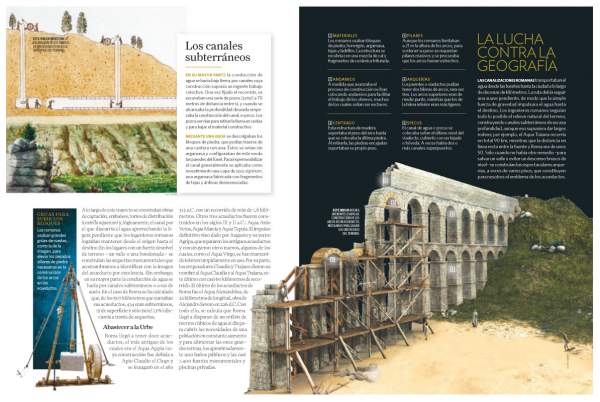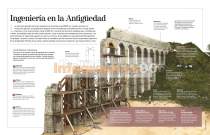Roman Aqueduct
The infographic of the Roman aqueduct presided over the report dedicated by National Geographic Historia to these hydraulic infrastructures, entitled The Aqueducts, Pride of Rome. In addition to causeways and bridges, the aqueducts are among the most abundant and spectacular engineering works of Roman wit and of antiquity. Before the first century of the Christian era, Rome, the capital of the empire, was constantly supplied with water by seven different aqueducts. The shortest aqueduct measured 16,5 km, and the longest was almost 91,5 km long. In the 3rd century AC came to have eleven aqueducts in service. The layout of most of them was underground. However, to overcome great differences in height, arches were built such as those of the aqueducts of Segovia, Mérida and Tarragona, in Spain, and that of Nimes (Pont du Gard), in France, declared a World Heritage Site by UNESCO.
Page(s): 56-57



